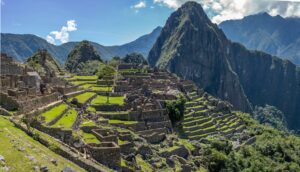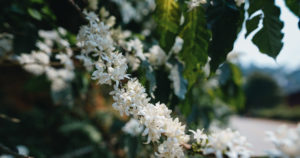When you think of the world’s best coffees, the rich, complex flavors of Ethiopia or Colombia may come to mind. However, nestled high in the Andean mountains, Peru has quietly become one of the most exciting and distinctive coffee origins in recent years. Known for its diverse landscapes and rich cultural heritage, Peru is now making waves on the global coffee scene. So, what makes Peruvian coffee so special? Let’s explore the history, the flavors, and the sustainable practices that make Peruvian coffee a unique gem.
A Rich History of Coffee Cultivation
Coffee cultivation in Peru dates back to the 18th century, when Jesuit missionaries brought coffee plants to the country. Today, coffee is grown in a variety of microclimates across the Peruvian highlands, which range from 600 to 2,000 meters above sea level. This elevation, combined with the diverse terrain, gives Peruvian coffee its remarkable range of flavors—from bright and floral to deep and chocolatey.
The high altitudes where the coffee is grown provide cooler temperatures and slower ripening times for the beans, allowing for a fuller, more complex flavor profile. The ideal growing conditions also contribute to the coffee’s overall quality, making Peruvian coffee highly sought after by specialty coffee roasters around the world.
Flavors of Peruvian Coffee: A Symphony of Tastes
Peruvian coffee is known for its incredible flavor diversity, which is largely due to the country’s varied geography. Depending on the region—such as Cajamarca, Puno, or Cusco—coffees can have different flavor notes, but a few general characteristics stand out:
- Bright Acidity: One of the most consistent features of Peruvian coffee is its bright, clean acidity. Many coffees from the region have vibrant, fruity notes reminiscent of citrus, berries, or green apple, providing a refreshing cup that appeals to those who enjoy a lively and zesty brew.
- Floral and Herbal Notes: Coffee from Peru often carries delicate floral notes, such as jasmine, lavender, and hibiscus, as well as herbal undertones, like mint or chamomile. These flavors are a reflection of the country’s rich biodiversity and varied growing environments.
- Balanced Body: While some coffees from high altitudes can be overly acidic or thin, Peruvian coffee typically has a balanced body, with a smooth mouthfeel that’s neither too heavy nor too light.
- Chocolate and Nutty Undertones: As you explore different regions of Peru, you may find coffees with more pronounced chocolate, nut, or caramel notes—especially from regions like Puno or Arequipa. These flavors lend a sweet, comforting richness to the cup, making it appealing to a wide range of coffee lovers.
The Role of Sustainability and Fair Trade
In addition to its remarkable flavors, Peruvian coffee is gaining recognition for its emphasis on sustainability and ethical farming practices. A significant portion of the country’s coffee production comes from small-scale farmers—many of whom are part of cooperatives. These cooperatives prioritize environmentally friendly farming practices and fair labor standards, ensuring that both the planet and the people behind the coffee are treated with respect.
Peru has become a leader in organic coffee production, with over 30% of the coffee grown in the country certified as organic. The high-altitude terrain, combined with the country’s rich biodiversity, allows farmers to grow coffee without the need for synthetic pesticides or fertilizers. This organic approach not only benefits the environment but also results in a purer, more authentic flavor profile in the coffee beans.
Fair trade practices also play a key role in Peru’s coffee industry. Many coffee farmers are part of organizations that promote fair wages, better working conditions, and community development. These cooperatives often reinvest profits into education, healthcare, and infrastructure, helping to uplift entire communities. Consumers who choose Peruvian coffee can feel confident that their purchase is contributing to positive social and environmental change.
The Peruvian Coffee Industry: Challenges and Growth
While Peruvian coffee has seen tremendous growth in recent years, it’s not without its challenges. Coffee farmers in Peru face issues such as climate change, pests, and fluctuating coffee prices. The rise in global temperatures threatens the delicate balance of the high-altitude coffee-growing regions, which could have long-term impacts on yield and quality.
Moreover, many small-scale farmers continue to struggle with market access and financial instability, despite the country’s growing reputation as a coffee origin. However, the rise of specialty coffee roasters and the increasing demand for Peruvian coffee in international markets is helping to address some of these issues, offering farmers new opportunities to improve their livelihoods.
Why You Should Try Peruvian Coffee
There are many reasons to seek out Peruvian coffee, whether you’re a casual coffee drinker or a connoisseur. Here are just a few:
- Flavor Variety: Peruvian coffee offers a broad spectrum of flavors, from fruity and floral to rich and chocolatey. With so many distinct profiles, there’s something for everyone, no matter your taste preference.
- Ethical Sourcing: Many Peruvian coffees are grown by small-scale farmers who are paid fairly and work under sustainable conditions. By choosing Peruvian coffee, you can support ethical farming practices and help create a positive impact on the coffee-growing communities.
- High Quality: Thanks to the ideal growing conditions in Peru, the country produces some of the highest quality coffee beans in the world. Whether you prefer light roasts that highlight the coffee’s acidity or darker roasts that bring out chocolatey, nutty flavors, you can trust that Peruvian coffee will deliver a satisfying cup.
- Sustainability: Organic and eco-conscious practices are at the heart of Peru’s coffee industry, making it a great choice for environmentally aware consumers.
In Conclusion
Peruvian coffee is much more than just a beverage—it’s a reflection of the country’s rich cultural heritage, diverse geography, and commitment to sustainability. The unique combination of high-altitude terroir, fair trade practices, and a growing emphasis on organic farming has elevated Peruvian coffee to global prominence. Whether you’re savoring the floral notes of a light roast or indulging in the rich, chocolatey undertones of a darker brew, Peruvian coffee offers a delightful and meaningful experience in every cup. So, the next time you’re in the mood for a great cup of coffee, consider reaching for a bag of beans from Peru—your taste buds, and the planet, will thank you.






